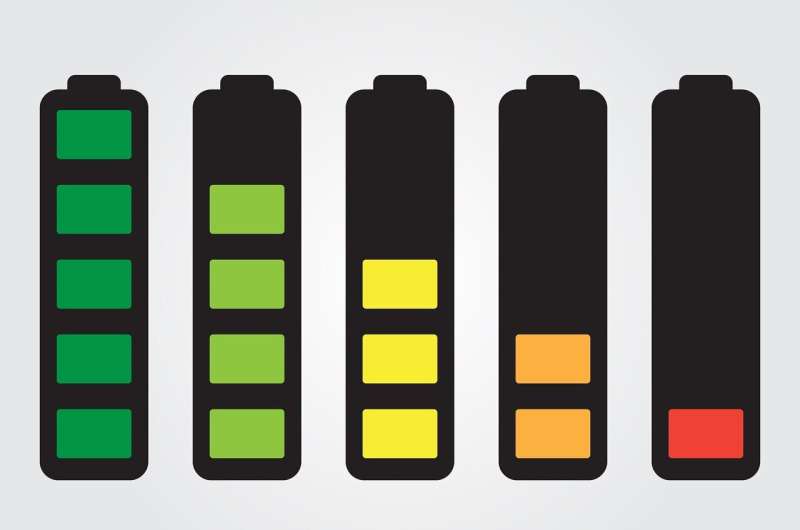Credit: CC0 Public Domain
As the world lessens its dependence on fossil fuels, industries and manufacturers are turning to lithium-ion batteries to power the machines that make modern life possible. These batteries power electric vehicles, mobile phones, drones, vacuum cleaning robots and other machines, and will be an essential component to the energy transition.
But there's a problem with lithium-ion batteries: As they age and are charged, they develop dendrites. A research team from the University of Houston is trying to solve the dendrite problem by investigating how these structures grow on batteries.
Dendrites are spiky structures that accumulate on the batteries' anodes. These structures reduce the life of the batteries, hinder their ability to hold a charge, and can short-circuit machines, potentially causing safety hazards like battery fires.
"By understanding how dendrites grow on batteries, we can identify chemical and physical solutions to prevent the growth of dendrites, which is necessary to develop the next generation of batteries," said Xiaonan Shan, assistant professor of electrical and computer engineering at UH's Cullen College of Engineering.
Shan and his team have developed a "novel in-situ" 3D microscopy to image and study the localized electrochemical environments and understand where dendrites start forming in batteries. Using the 3D microscope, small cameras and other computer imaging technology, Shan and his team were able to geometrically map out how a battery initially develops dendrites.
The findings were recently published in the journal Advanced Energy Materials.
"This is significant because most battery researchers traditionally use electrochemical measurements to measure the entire surface or interior battery, so they don't know what happens inside the battery," said Shan, who is a corresponding author on the paper. Electrical and computer engineering graduate student Guangxia Feng is the lead author.
Most battery companies focus on the materials part of developing batteries, so new materials emphasize performance, he added.
"With this process, manufacturers can theoretically make better performing batteries by focusing on the structural design of batteries that discourages the growth of dendrites," Shan noted.
Authors joining Shan and Feng on the paper are Jiaming Guo, Yaping Shi, Xiaoliang, Xu Yang and David Mayerich, all of the UH Department of Electrical and Computer Engineering; and Huajun Tian, Zho Li and Yang Yang, University of Central Florida.
More information: Guangxia Feng et al, Probe the Localized Electrochemical Environment Effects and Electrode Reaction Dynamics for Metal Batteries using In Situ 3D Microscopy, Advanced Energy Materials (2021). DOI: 10.1002/aenm.202103484
Journal information: Advanced Energy Materials
Provided by University of Houston























